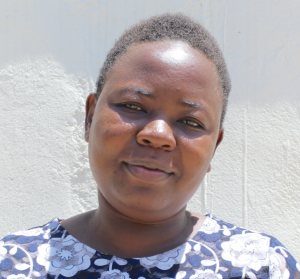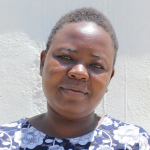The village of Kalenda B, being distinct from Kalenda A, is separated from its sister village by an access road. Kalenda B is entirely of the rural setting, with homes scattered all over the place. Houses are mud-walled and thatched by grass or use iron sheets as the roof. The area is very green thanks to the many trees, large plantations, and the thick grass cover. Kalenda B is very calm, quiet, and peaceful.
Children are seen as a source of pride in this community. All the adults are expected to bring something to the table as they majorly depend on agriculture as a source of income. All mothers take care of their children and the entire family. People here are mostly engaged in farming. Some of the crops include sugarcane, maize, kale, groundnuts, and cassava.
Here, the women are the ones who start off the day as they get up as early as 6:00 am to prepare children for school, prepare breakfast, clean their home, and later get the other home chores tackled. The gents get up later and take breakfast as they leave for their daily activities. Homes are usually unoccupied during the day as almost everyone is away save for the holidays, when the children stay at home with the supervision of an adult. Otherwise, people start showing up at home again at around 5:00 pm to settle the day down and have dinner at around 7:00 pm around a central news point like the radio.
Community members here support each other well. Any function that requires communal attendance is well observed. These functions ranging from church functions, fundraising, weddings, and funeral ceremonies, which are always attended to the max like it is an unwritten rule. This encourages and promotes peace, love, and unity in the community.
Lumbasi Spring located in Kalenda B is used by 280 very friendly, happy people. They are seen talking to each other while doing their laundry close to the spring, while others engage in farming on the lands surrounding it. They are happy and feel honored for being considered for a project like this and have promised to work hand in hand with the organization to ensure that the project becomes a success and benefits everyone in the area.
Field Officer Betty Majani was the first of our team to see the water at Lumbasi Spring.
"Clear water, plants, moss, insects, contamination. My eyes ran through all the things that were visible in the water reservoir. It wasn't [as] appealing as the community members saw it. Most of them did not see past the clear water," she reported, sharing her first gut reaction to the water source.
Lumbasi Spring is quite easily accessible from the homes around and the terrain is favorable for both children and adults to get to the spring. The water is in plenty and can be accessed at any time of the day and by anyone. However, the collection point is rather small and can only be accessed by one person at a time.
Observing how the water is fetched from the spring, one is quickly discouraged from drinking the water by the way it is handled on the go. The more people fetch water, the more it gets dirty and once it is dirty, people have to wait for it to settle and become clear so that they can start fetching it again. This wastes a lot of time. Water must be scooped from the spring's natural reservoir using different containers. Some people use jugs but a central container can be spotted by the side of the spring, left for anyone to use. This jug is visibly aged, and we spotted moss growing on its interior.
Due to the scarcity of clean water in Kalneda B, the health of the community members is at stake, especially for children. The young and the elderly are more prone to waterborne diseases like cholera, typhoid, and bilharzia. Families spend a lot of money on treatment and on transportation from home to the hospital with the aim of seeking medical attention. When adults fall sick, their farming is affected which is their main source of income.
At times, people overcrowd at the spring and they end up fighting because each person wants to be the first to fetch water. Though the fights are not common, they cause tension and disrupt the pleasant social life people here otherwise enjoy.
Elphas Lumbasi is a 21-year-old farmer and student in Kalenda B. He is also related to Mr. Absolomon Lumbasi, the spring's landowner. Elphas depends on Lumbasi Spring for his daily water needs.
"Making many trips to the clinic due to stomach upsets and fear of contracting a chronic disease like typhoid is one of the biggest challenges we face concerning lack of clean water," he said. "It is a huge financial burden on smaller families."
Adding to community members' poor health is their lack of sanitation facilities and knowledge on hygiene best practices. Only about 71-80% of families have latrines, which are typically wooden logs balanced over a pit dug into the earth.
"[These] sometimes have not been a very effective method. Some children are afraid of falling into the pits and end up defecating on the floor instead," explained Jackline Angatia, a 27-year-old farmer and mother in Kalenda.
What we can do:
Spring Protection
Protecting the spring will help provide access to cleaner and safer water. Construction will keep surface runoff and other contaminants out of the water. With the community’s high involvement in the process, there should be a good sense of responsibility and ownership for the new clean water source.
Fetching water is a task predominantly carried out by women and young girls. Protecting the spring and offering training and support will, therefore, help empower the female members of the community by freeing up more of their time and energy to engage and invest in income-generating activities.
Training
Community members will attend hygiene and sanitation training for at least 2 days. This training will ensure participants have the knowledge they need about healthy practices and their importance. The facilitator plans to use Participatory Hygiene and Sanitation Transformation (PHAST), Community-Led Total Sanitation (CLTS), Asset-Based Community Development (ABCD), group discussions, handouts, and demonstrations at the spring. One of the most important topics we plan to cover is the handling, storage, and treatment of water. Having a clean water source will be extremely helpful, but it is useless if water gets contaminated by the time it is consumed. We will also emphasize the importance of handwashing.
Training will result in the formation of a committee that will oversee the operations and maintenance of the spring. They will enforce proper behavior around the spring and delegate tasks that will help preserve the site, such as building a fence and digging proper drainage channels. The fence will keep out destructive animals, and the drainage will keep the area’s mosquito population at a minimum.
Sanitation Platforms
On the final day of training, participants will select 5 families that should benefit from new concrete latrine floors. Training will inform the community and selected families on what they need to contribute to make this project a success. They must mobilize locally available materials, including bricks, clean sand, and gravel. The 5 families chosen for sanitation platforms must prepare by sinking a pit for the sanitation platforms to be placed over. All community members must work together to make sure that accommodations and food are always provided for the work teams.

 Protected Spring
Protected Spring
 Rehabilitation Project
Rehabilitation Project





































